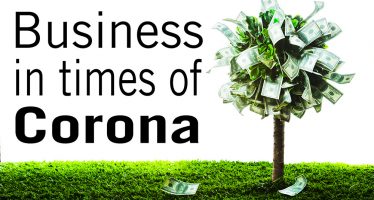Evan Harvey, Nasdaq: The Board Perspective on ESG
 Sustainability is a moving target. Though we might want uniformity, unanimity, and harmonisation — of standards, disclosures, and data points — there is mostly disorder. The signal of value is strong enough to hold our interest, but all the surrounding noise limits our understanding.
Sustainability is a moving target. Though we might want uniformity, unanimity, and harmonisation — of standards, disclosures, and data points — there is mostly disorder. The signal of value is strong enough to hold our interest, but all the surrounding noise limits our understanding.
Investors have certainly heard the signal. Firms both large and small seek to leverage sustainability in some way, to integrate ESG data into an outperforming, long-term portfolio. Recent research continues to demonstrate that ESG-themed investments can match market returns (Morningstar, 02/19/20) or even exceed them (Financial Times, 06/13/20). And if ESG returns are overhyped (Institutional Investor, 08/20/20), they are still driving a $30tn investment boom.
How are other stakeholders analysing and integrating sustainability issues into their decision-making? Certain aspects of this trend directly impact R&D, valuation, performance, transparency, and culture — which is why corporate boards have been increasingly involved. As of 2019, 43 percent of all Russell 1000 companies had already developed formal board oversight of ESG issues (Glass Lewis).
As a report from Deloitte’s Center for Board Effectiveness bluntly put it: “Directors need to understand the environmental and social impacts on the business strategy and risk profile of the companies they serve.”
“Today, best-practice is increasingly synonymous with ESG among and overarching concepts such as corporate purpose and a multi-stakeholder approach to governance.”
I wanted to dig into this topic with an expert, so I turned to my Nasdaq colleague Kellie Huennekens. Huennekens worked at EY for many years and now supports our efforts to drive board excellence through (among other things) an integrated approach to ESG expertise, insights and technology.
We’ve heard about certain climate initiatives crossing the 50 percent vote mark with investors and companies lately. Did any specific vote during the 2020 proxy season surprise you?
Absolutely. It’s been an unusual proxy season in so many ways. Growing urgency on climate change is galvanising action. Oil majors announcing net-zero ambitions. Continuing growth in investor-company engagement. And growing investor support for shareholder proposals on climate risk.
For me, the biggest surprise (at least as of early July) has been the 70 percent support for a shareholder proposal on diversity and inclusion. While vote support for shareholder proposals in general can vary based on the specific ask, the investor base and the company’s specific situation, this is an unusually high vote and appears to reflect current events.
COVID-19, the Black Lives Matter and MeToo movements, and the recent Supreme Court ruling on LGBTQ protections sharply focused attention to one key question: how are companies providing all workers with equal opportunity and equal protection?
To be clear, the prioritisation of diversity and inclusion — like climate — has been decades in the making, reflecting attention to systemic, societal and economic considerations that are foundational to economic growth and long-term corporate value. It just so happens that human capital and climate also are going to be two key themes running through many post-annual meeting engagement conversations and the run-up to proxy season 2021.
What can proxy filings tell us about the current state of company practice, management, and reporting? Have you noticed an uptick in certain subject areas, such as climate change, gender and diversity, and so on?
A: While the numbers for 2020 are still coming in, an early look at proxy filings found that boards are demonstrating greater involvement on ESG. For example, proxy statements are increasingly including a “letter to shareholders” from the CEO, board chair or the full board to showcase business and ESG related achievements. Nearly all reviewed companies participated in investor engagement (98 percent, up from 92), 92 percent featured their ESG initiatives (up from 82 percent), and 86 percent said investor engagement covered climate change and environmental sustainability (up by 33 percent).
As part of the growing focus on ESG and shifting roles and responsibilities, some board committees have been renamed. For example, Nasdaq now has a “Nominating & ESG Committee.” Compensation committees, too, are increasingly codifying oversight responsibility of certain human capital matters – extending beyond the CEO and C-suite.
And they are adjusting the name of the committee to emphasise the human capital element: the Compensation and Human Capital Committee, for example. We’re concurrently seeing an increase in corporate disclosures about director skills and qualifications relating to environmental sustainability and human capital matters.
These are all trends that emerged over the past decade. One thing to watch is to what extent these changes accelerate.
Where do companies turn for guidance on communications with investors, either through the proxy or in other ways? Are there clear standards of disclosure when it comes to these emerging subject areas?
US companies can be incredibly innovative in formal corporate filings as well as other communications. This may be in the form of reporting or dedicated websites housing a company’s environmental and social metrics and related narratives. There may be videos where specific committee chairs explain the work that they do and their priorities in carrying out this work.
Smaller companies are demonstrating the creativity, too. Sometimes you’ll find a single sentence highlighting the board’s commitment to diversity, which includes the percentage of board members who are diverse in terms of gender or race/ethnicity.
The richness of US companies’ voluntary disclosures can be inspiring, but it’s also messy in that they vary by company. This used to be something that was associated only with the very largest companies. Now a growing range of companies are voluntarily disclosing on topics of interest to their investors and other stakeholders.
My advice to companies is to look at largest five companies in their sector to see what they’re doing in terms of the proxy statement, their sustainability report/website, and governance documents. There’s a wealth of useful information there – in particular, about the direction of shifts in corporate practices and corporate disclosures.
We hear so much about the proxy system being potentially (or even purposefully) contentious; investor engagement is often relegated into the legal and risk category. Are US companies using the system to integrate feedback effectively, or are they using merely it to defray criticism?
Historically, “good governance” was seemingly built on securities law alone. After Enron and WorldCom, we saw companies voluntarily help define best-practice through their own practices. Mandatory say-on-pay led to a reshaped investor engagement landscape and greater influence by investor stewardship teams. More recently, passive investing and ESG (both as an investment thesis and governance strategy) further accelerated ongoing shifts.
Today, best-practice is increasingly synonymous with ESG among and overarching concepts such as corporate purpose and a multi-stakeholder approach to governance. Leading companies are living this and a growing number of other companies are joining them. The next question is: when will “best practice” become “mainstream practice”?
Individuals divided on ESG agree that: 1) Companies should disclose on material ESG factors and 2) this disclosure should be vetted to mitigate inconsistent messaging and “greenwashing”.
My recommendation to companies is that they consider reaching out to key internal (business and functional operations) and external (institutional investors, customers, suppliers and employees) stakeholders to learn what they consider to be material to the business. From this starting point, common themes or categories that the company should consider monitoring and disclosing on becomes clearer.
About the Author

Evan Harvey
Evan Harvey is the Global Head of Sustainability for Nasdaq. He also serves on the Board of Directors for the UNGC Network USA and the Global Sustainability Standards Board for the GRI.
You may have an interest in also reading…
Business in Times of Corona: The Dangerous Fruit of the Magic Money Tree
In one of life’s little ironies, it was not the senator from Vermont but the billionaire businessman from New York
Urban Energy Efficiency Key to Mexico’s Ambitious Goals for Energy and Low Carbon Growth
Mexico sees urban energy efficiency as critical for sustainable growth, livable cities and competitiveness Ministry of Energy rolls out national
Azerbaijan FDI
Azerbaijan is a country with wide range of investment opportunities and is undoubtedly one of the most attractive destinations for



















































































